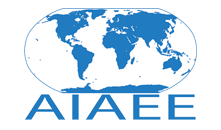Keywords
Egypt, higher education, agriculture, skills gaps
Abstract
Egypt’s Strategic Development plan calls for higher-education curricula that produce workforce-ready graduates. Creating such curricula requires strong understanding of the skills and attributes most valued in the economy. Toward this end, this study focused on Egyptian agriculture sectors and measured perspectives of Egyptian agriculture university professors, students and private-sector employers on areas for potential job opportunities for agriculture university graduates and the skills graduates need toobtain and excel in those jobs. Using a survey-based approach, the study included responses from 417, 974, and 92 professors, students, and employers, respectively. Employers and professors identified poultry production, food/beverage processing, and protected horticulture as sectors (among 24 choices) with the most employment opportunities for agriculture university graduates. The most valued skills in new employees from employers’ perspectives (among 35 choices) were identified by principle component analysis and included familiarity with technologies, ability to apply academic knowledge to real scenarios, ethical decision-making, teamwork and problem-solving skills, ability to work with others from diverse backgrounds, and motivation and ability to learnnew things. The largest students’ skills gaps (difference between value of the skill in new employees and students’ competency level in the same skill as assessed by employers) included time management, ability to plan/organize, conflict management, knowledge of industry, and ability to manage tasks/projects. Taken together, these results can inform development of market-driven curricula in Egyptian agriculture universities by highlighting areas/attributes where students should focus to increase their employability and pedagogies that allow students to gain these skills during their university careers.
Rights Statements
This Item is protected by copyright and/or related rights. You are free to use this Item in any way that is permitted by the copyright and related rights legislation that applies to your use. For other uses you need to obtain permission from the rights-holder(s).
Erratum
A correction has been issued for this article. The DOI of the article was incorrect as published. The correct DOI is: 10.5191//jiaee.2020.274128. Link to Erratum: https://doi.org/10.4148/2831-5960.1470
Recommended Citation
Ebner, P.,
Thompson, L.,
Ghimire, R.,
Dissanayake, D. G.,
Joshi, N.,
&
Saleh, W. D.
(2020).
Employability of Egyptian Agriculture University Graduates: Skills Gaps.
Journal of International Agricultural and Extension Education, 27(4), 128-143.
DOI: https://doi.org/10.5191//jiaee.2020.274128



